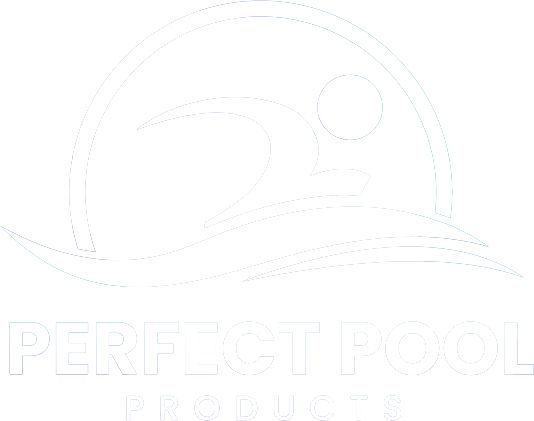pH balance is a way to measure how acidic or basic (alkaline) the water in your pool is. The pH scale goes from 0 to 14. A pH of 7 is considered neutral—not too acidic and not too basic. Pool water should have a pH between 7.2 and 7.8 for it to be just right.
It helps keep your pool water clear and safe. It makes chlorine work better, which keeps the water clean and free of germs. It also makes sure your pool equipment and surfaces stay in good shape.
What Can Happen If pH Isn’t Right?
Well, If the pH is too low (acidic), it can irritate your skin and eyes. It can also damage your pool equipment, like pumps and heaters. If the pH is too high (alkaline), the chlorine won’t work well. This can cause cloudy water and scale buildup on your pool walls and equipment.
So, you should keep your pool’s pH just right. In this blog, we will show you how!

What Is pH Balance?
pH balance is a way to measure how acidic or alkaline (basic) the water in your pool is. Imagine it like a scale that helps you see how "sour" (acidic) or "soapy" (alkaline) the water feels. The scale goes from 0 to 14:
-
0 to 6 means the water is acidic.
-
7 is neutral, like pure water.
-
8 to 14 means the water is alkaline.
For your pool, you want the pH level to be between 7.2 and 7.8. This is the ideal range where the water isn’t too acidic or too alkaline.
Scientific Calculation of pH
The pH scale is based on the concentration of hydrogen ions (H+) in the water. If there are more hydrogen ions, the water is more acidic. If there are fewer hydrogen ions, the water is more alkaline. The pH number is calculated using a formula that measures this concentration.
But don’t worry—most pool tests and products do the calculation for you!
Keeping the pH within the right range is important for your pool’s health, as we’ll see in the next section.
Why pH Balance Matters for Your Pool
If the pH is too low (acidic), it can cause corrosion. This means your pool’s equipment (like pumps and heaters) can wear out faster.
If the pH is too high (alkaline), it can lead to scaling—like a white crusty build-up on your pool walls and pipes. Both problems can be costly to fix.
Swimmers’ Comfort
When the pH is not right, it can irritate swimmers' skin and eyes. Low pH can cause itchy skin and red, stinging eyes.
High pH can make the water feel slimy and uncomfortable. Keeping the pH balanced ensures swimmers have a comfortable experience.
Effectiveness of Pool Chemicals
The chlorine and other chemicals in your pool work best when the pH is in the right range. If the pH is too low, the chlorine will work too quickly and won’t last as long.
If the pH is too high, chlorine won’t be able to fight off bacteria and germs as well, which means the water might not be as clean.
In short, pH balance keeps your pool safe, clean, and comfortable.
What Happens When pH Is Too High or Too Low?
|
pH Level |
Too Low (Below 7.2) |
Too High (Above 7.8) |
|---|---|---|
|
Skin & Eyes |
Itchy skin, red eyes |
Slippery skin, eye irritation |
|
Pool Equipment |
Corrosion, rust, metal staining |
Scaling, clogged filters |
|
Chlorine |
Less effective, quick chlorine loss |
Less effective, slow chlorine action |
|
Water Quality |
Cloudy water, algae growth |
Cloudy water, algae growth |
|
Pool Surface |
Etching, surface damage |
Staining, surface damage |
|
Overall Health |
Bacteria growth, increased chemical use |
Bacteria growth, increased chemical use |

How to Test Your Pool’s pH Balance
Testing your pool’s pH balance is an important part of maintaining clean and safe water. Here’s how to do it:
Steps to Test pH Using Test Strips:
-
Dip the Test Strip: Take a pH test strip and dip it into the pool water for a few seconds.
-
Wait a Few Seconds: Let the strip sit for a few moments until the color changes.
-
Compare with Color Chart: Compare the color of the strip to the chart that comes with your test kit. This will give you a pH reading.
Steps to Test pH Using Liquid Testing Kits:
-
Fill the Test Vial: Collect a small sample of your pool water in the test vial.
-
Add Reagents: Add a few drops of the pH indicator solution (like Phenol Red or pH reagent) into the vial.
-
Shake and Wait: Shake the vial gently, then wait a minute for the color to change.
-
Compare Color: Compare the water color to the provided pH chart to determine your pool's pH level.
Tip: It’s important to test the pH level of your pool at least 2 times a week to keep the water in the ideal range of 7.2 to 7.8.
You can find the essential products in our collection at Perfect Pool Products.
How to Fix pH Imbalances
If you notice that your pool’s pH is not in the ideal range of 7.2 to 7.8, you can fix it with the right chemicals. Here’s what you need to do:
If pH is Too High:
-
Use a pH Decreaser: When the pH is too high (above 7.8), you’ll need to lower it. The most common way to do this is by adding a pH decreaser such as muriatic acid or dry acid.
-
How to Add: Always follow the manufacturer's instructions for adding chemicals. Pour the acid slowly around the edge of the pool while the pump is running to ensure it mixes well.
If pH is Too Low:
-
Use a pH Increaser: If the pH is too low (below 7.2), you’ll need to raise it. The most common chemicals used for this are soda ash or sodium bicarbonate.
-
How to Add: Add the pH increaser slowly around the pool, allowing the pump to circulate the water for even distribution.
Important Tips:
-
Add Chemicals Slowly: Always add chemicals in small amounts and retest the water after a few hours to avoid overshooting the correct pH level.
-
Retest Regularly: After adjusting the pH, test the water again to ensure it stays within the ideal range.

Conclusion
Make sure you maintain the right pH balance and keep your pool water clean, clear, and comfortable. Regular testing and proper chemical adjustments can make a huge difference in the health of your pool and the enjoyment of swimmers.
Don't forget to visit our collection. We offer everything you need to keep your pool water just right!
Thanks for reading! If you found this blog helpful, feel free to share it with others and keep your pool water in perfect balance!
 Trusted By Pool Owners Nationwide
Trusted By Pool Owners Nationwide


